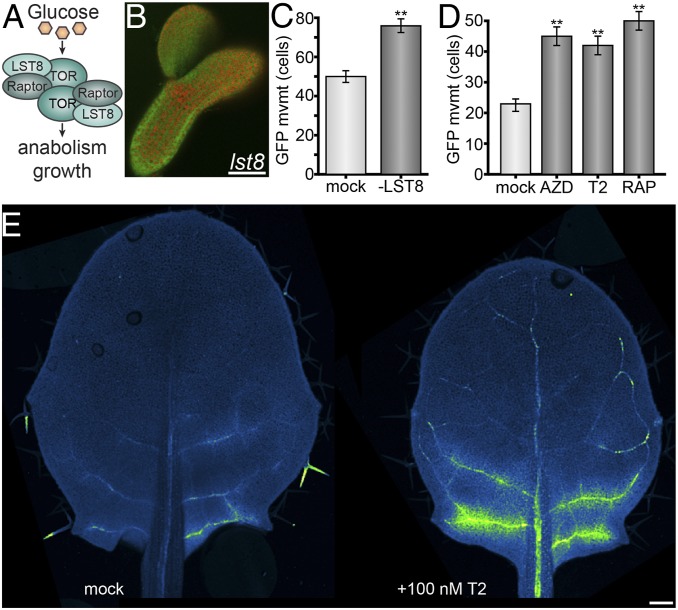Fig. 2.
TOR restricts cell–cell transport. (A) TORC1 model. TORC1 is a dimer composed of TOR, RAPTOR, and LST8. Glucose stimulates TORC1 to promote anabolism, cell division, and growth, depending on developmental context. (B) The 10 kDa FITC-dextran rapidly moves through lst8 midtorpedo-stage Arabidopsis embryos (for wild-type, see Fig. 1A; FITC, green; chlorophyll, red). (Scale bar, 100 μm.) (C) Silencing LST8 expression with VIGS increases PD transport in N. benthamiana leaves (n ≥ 43, **P < 0.001; error bars indicate SEM). Leaves equivalent to L8 (Fig. 5B) were used for this experiment. (D) Chemically inhibiting TOR activity with ATP-competitive kinase inhibitors [AZD-8055 or Torin 2 (39)] or rapamycin [steric inhibitor through interaction with FKBP12 (38, 75–78)] increases PD transport in N. benthamiana leaves (n ≥ 108, **P < 0.001; error bars indicate SEM) L6 leaves (Fig. 5B) were used for this experiment. (E) Chemically inhibiting TOR activity with Torin 2 in young leaves increased import of GFP from source leaves via the phloem in SUC2PRO:GFP Arabidopsis plants. Mock-treated leaves of the same age and size showed little to no GFP import. GFP fluorescence is shown in green; background chlorophyll autofluorescence is shown in blue; some trichome autofluorescence (not GFP) is also visible and shown in green. (Scale bar, 100 µm.)

